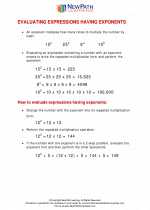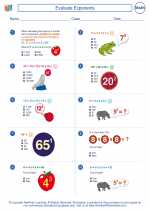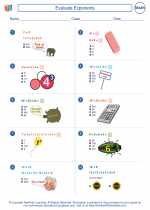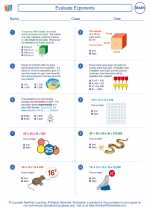What is an Expression?
An expression in mathematics is a combination of numbers, symbols, and operators (such as +, -, *, /) that represents a value. It can contain variables, constants, and mathematical operations. Expressions are used to represent a mathematical relationship or to perform calculations.
Types of Expressions
There are several types of expressions in mathematics:
- Numerical Expression: A numerical expression contains only numbers and mathematical operations. For example, 3 + 4 * 2 is a numerical expression.
- Variable Expression: A variable expression contains variables, constants, and mathematical operations. For example, 2x + 5 is a variable expression.
- Algebraic Expression: An algebraic expression contains variables, constants, and mathematical operations. For example, 3x^2 - 2xy + 7 is an algebraic expression.
Parts of an Expression
An expression is made up of several parts:
- Term: A term is a single mathematical expression separated by + or - signs. For example, in the expression 3x^2 - 2xy + 7, the terms are 3x^2, -2xy, and 7.
- Coefficient: The coefficient is the numerical factor of a term. For example, in the term 5x, the coefficient is 5.
- Variable: A variable is a symbol that represents a value. Common variables include x, y, and z.
- Constant: A constant is a fixed value that does not change. For example, in the expression 2x + 5, the constant is 5.
Simplifying Expressions
To simplify an expression, you perform operations such as combining like terms, distributing, and factoring. Here are some key steps for simplifying expressions:
- Combine Like Terms: Combine terms with the same variables and exponents. For example, in the expression 3x + 2x - 5x, you can combine 3x and 2x to get 5x.
- Distribute: Use the distributive property to multiply terms inside parentheses. For example, in the expression 2(3x + 4), you can distribute the 2 to get 6x + 8.
- Factor: Factor out common terms or use factoring techniques to simplify the expression. For example, in the expression x^2 - 4x, you can factor it as x(x - 4).
Practice Problems
Now that you understand expressions, here are some practice problems to test your knowledge:
- Simplify the expression 5x + 3 - 2x.
- Factor the expression x^2 + 5x + 6.
- Simplify the expression 2(3x - 4) - 5(2x + 1).
◂Math Worksheets and Study Guides Sixth Grade. Evaluate Exponents
Study Guide Evaluate Exponents
Evaluate Exponents  Worksheet/Answer key
Worksheet/Answer key Evaluate Exponents
Evaluate Exponents  Worksheet/Answer key
Worksheet/Answer key Evaluate Exponents
Evaluate Exponents  Worksheet/Answer key
Worksheet/Answer key Evaluate Exponents
Evaluate Exponents 

 Worksheet/Answer key
Worksheet/Answer key
 Worksheet/Answer key
Worksheet/Answer key
 Worksheet/Answer key
Worksheet/Answer key

The resources above cover the following skills:
Number and Operations (NCTM)
Understand numbers, ways of representing numbers, relationships among numbers, and number systems.
Develop an understanding of large numbers and recognize and appropriately use exponential, scientific, and calculator notation.